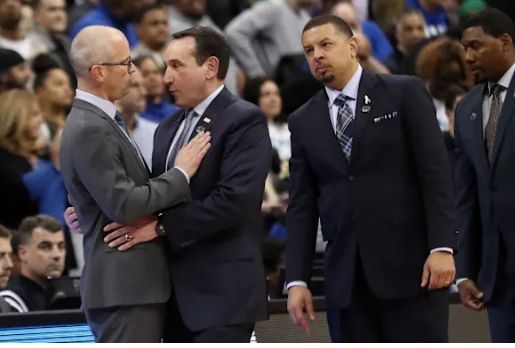In recent weeks, the college basketball community has been abuzz with discussions about a potential merger between the Atlantic Coast Conference (ACC) and the Big East Conference. This conversation gained momentum when legendary former Duke coach Mike Krzyzewski, commonly known as Coach K, proposed the idea of forming a “mega basketball conference” by uniting the ACC and the Big East. He suggested that such a merger could enhance the competitiveness and appeal of college basketball, especially in light of recent conference realignments that have reshaped the landscape of collegiate athletics.St. John’s head coach Rick Pitino echoed Coach K’s sentiments, expressing strong support for the merger. Pitino highlighted the financial disparities faced by Big East schools, particularly due to the absence of football programs, which often serve as significant revenue sources. He emphasized that collaborating with the ACC could provide the necessary financial boost and visibility for Big East institutions to remain competitive on the national stage. UConn men’s basketball coach Dan Hurley also weighed in on the proposal, stating that a merger between the Big East and the ACC “makes tons of sense.” Hurley revealed that he had engaged in discussions about this potential merger with various influential figures, including Coach K and UConn athletic director David Benedict. He believes that such a merger could rejuvenate basketball programs that have struggled since leaving the Big East, citing examples like Syracuse and Pittsburgh. Hurley also noted that aligning with the ACC could provide UConn’s independent football program with a conference affiliation, addressing a longstanding challenge for the university. The concept of merging the ACC and the Big East is not without its complexities. Big East commissioner Val Ackerman acknowledged the idea’s potential, especially when proposed by esteemed coaches like Krzyzewski and Pitino. She emphasized the importance of exploring alliances to ensure the future relevance and strength of college basketball. However, Ackerman also pointed out that such a merger would require careful consideration of various factors, including media rights agreements and the differing structures of the two conferences. One of the significant challenges in pursuing this merger is the existing media rights contracts. The Big East is currently in agreements with Fox, NBC, and TNT Sports, averaging nearly $80 million annually, while the ACC has a long-term deal with ESPN extending until 2036. Renegotiating these contracts to accommodate a merged conference would be a complex and potentially contentious process. Furthermore, the structural differences between the two conferences present additional hurdles. The ACC comprises 18 basketball programs, whereas the Big East has 11 member schools. Integrating these teams into a single conference would require a comprehensive reevaluation of scheduling, tournament structures, and revenue-sharing models to ensure fairness and competitiveness. Despite these challenges, the potential benefits of such a merger are compelling. Combining the rich basketball traditions of both conferences could lead to a powerhouse league featuring marquee matchups that would captivate fans and attract significant media attention. Schools like Duke, North Carolina, UConn, and Villanova could face off regularly, creating a conference that rivals any in the nation in terms of talent and viewership. For UConn specifically, aligning with the ACC could address the financial disparities stemming from its current conference affiliation. The Big East’s media rights revenue is significantly lower than that of Power Four conferences, limiting resources available for athletic programs. A merger could provide UConn with increased revenue, enhancing its ability to invest in facilities, recruiting, and overall program development. Moreover, UConn’s football program, currently operating as an independent, would benefit from conference affiliation, providing stability and scheduling consistency. This alignment could also enhance the university’s appeal to recruits, offering them the opportunity to compete in a prestigious conference across multiple sports.In conclusion, while the proposal to merge the ACC and the Big East presents several logistical and contractual challenges, the potential advantages for member institutions, athletes, and fans are substantial. The support from influential figures like Coach K, Rick Pitino, and Dan Hurley underscores the seriousness of this idea. As discussions continue, stakeholders will need to navigate the complexities thoughtfully to determine if such a merger is feasible and beneficial for the future of college basketball.















